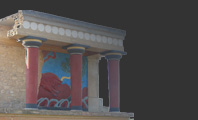|
The Archaeological Museum
|
|
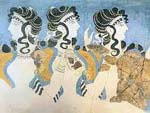 |
|
The museum of Heraklion is located in Heraklion, the capital of Crete, and is one of the most important and richest museums in Greece. Housing, in its 20 rooms, finds exclusively excavated on Crete and related to its prestigious past (from Neolithic to Roman times, passing by the important and prosperous Minoan period).
Sculptures, clay figurines, superb jewels and astonishing frescoes and remains from the various Minoan palaces of Crete.
Telephones: (2810) 224630, 226092, 226470
fax: 241515
Open:Mon 12:30-17:00, Tue-Sun 08:00-17:00
|
|
More Information Here...
|
|
| |
|
The Knossos Palace
|
|
| |
No visit to the town of Heraklion is complete without visiting the 'Ancient Palace of Knossos', the origin of the legend of the labyrinth, which dates back as far as 2000 B.C. It was the residence of the legendary King Minos and is situated in a small valley overlooking the river, only 5 kilometres away from Heraklion town. The Palace itself was a multistoried structure with many floors, innumerable corridors and colonnades, excavated and reconstructed by Sir Arthur Evans in 1900. It was the political, economic and religious centre of the
glorious Minoan Dynasty.
Telephone:(2810) 231940
Open:daily 08:00-17:00 |
|
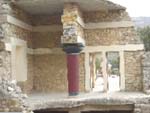 |
More Information Here...
|
|
| |
|
The Phaestos Palace
|
|
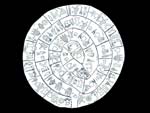 |
|
Phaestos, located 60 km south-west of Heraklio, was one of the island's most prominent cities and the dominant city in Messara Valley. According to mythology, this city's King was Radamanthys, the brother of Minos and son of Zeus. The area had been inhabited since the Neolithic Period (3000 BC) and in its prime had two harbours, Matala and Knossos, with great commercial and financial activity. The town thrived until the 2nd century BC, when its rival city Gortys, destroyed it. Excavations in the area were conducted in 1900 by the Italian
School of Archaeology and brought to light an imposing palace which was ruined in 1700 BC. A new palace was re-built on the same location, covering an area of 18,000 square meters. In 1450 BC, probably due to the volcanic eruption in Thera, the new palace was also destroyed. Today, one can see the remains of the storage-rooms, the altar, small reservoirs, workshops and the royal quarters. A number of archaeological finds was unearthed during the excavations at Phaestos, the most important of all was the disc of Phaestos, exhibited today at the Archaeological Museum of Heraklio.
Telephone:(28920) 91315
Open:daily 08:00-17:00
|
|
More Information Here...
|
|
| |
|
The Mallia Archaeological Museum
|
|
| |
Malia is a town with 2500 permanent inhabitants. Its population becomes greater during the summer time, due to the people who work at the tourism industry, offering the thousands of tourists who are visiting Malia every year, a large number of services. The town covers an extensive area. The old part of the town is more compact with narrow streets full of taverns, bars, stores, etc. and is usually crowded, especially at night. The development is still in progress and today the municipality is trying to make a modern town preserving its old character.
From Malia, you may visit the archaelogical site of Malia, where a minoan town has been found as well as an exquisite minoan mansion. The Palace of Malia is located 3Km East of the town of Malia and it is the third-largest Minoan Palaces. It covers an area of 7,500 sq.m.
Telephone:(28920) 91315
Open:daily 08:00-17:00
|
|
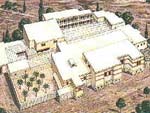 |
More Information Here...
|
|
| |
|
Heraklion Harbour Fortress (Koules)
|
|
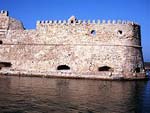 |
|
The Castle of Heraklio, known also as "Koules" stands at the entrance of the venetian harbour and is said to be the best preserved sample of the city's venetian fortification. It was originally built by the Venetians in the 13th century and was destroyed by two strong earthquakes, in 1303 and 1500. It was rebuilt in 1523 - 1540 and was named "Rocca al Mare". The Castle grounds housed the port authorities, prisons and storage-rooms. When Heraklio came under Turkish Occupation, mosques were built in the yard and the castle was renamed "Koule".
Today, one can see a large part of the building, part of a mosque, signs of Morozini and the lions of St Marcus, symbols of the Venetian Rule. From the Castle, the view of the city and the port is impressive.
Telephone:(2810) 288484
Open:Tue-Sun 08:30-15:00
|
|
More Information Here...
|
|
| |
|
Lychnostatis Museum
|
|
| |
The Lychnostatis Museum is situated at Limenas Hersonissou and was established in 1992 by professor of ofthalmology and collector -laographer Georgios Markakis. It is a remarkable Folk and Nature Museum of tremendous interest. Here, one is informed about the island's natural environment and folk tradition. Exhibits include representations of a traditional cretan house, a church, a windmill, a field, a workshop of weaving and natural paint, a workshop proccessing aromatic plants etc. Here, one can also tour the small outdoor exhibition of Cretan raw materials, the exhibition concerning Cretan folk artists, the outdoor theatre and the auditorium which hosts significant cultural events, seminars and lectures.
Limin Hersonissou
Telephone:(28970)23660, fax: 24674
Open:Tue-Sun 09:30-14:00
|
|
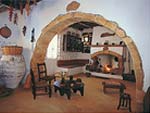 |
More Information Here...
|
|
| |
|
Gortys Archaeological Site
|
|
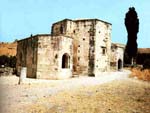 |
|
The archaeological site of Gortys is located on the main road that runs to south central Crete from the capital Heraklion. The original settlement covered an area of approximately 10 km.Gortys is one of the most important ancient cities of prehistoric Crete. Whilst its story goes back as far as the Minoan period, one particularly important period was that which followed the occupation of Crete by the Dorians (1100 BC). Later, during the Roman occupation (68 BC), Gortys was the largest city in Crete with 300.000 inhabitants. The city was destroyed in 828 AD by Arabs.
Telephone:(28920) 31144
Open:Mon-Sun 08:00-17:00
|
|
More Information Here...
|
|
| |
|
Agia Trias Archaeological Site
|
|
| |
The archaeological site of Agia Triada is located 63 km south-west of Heraklio. It was named after the nearby 14th-century church and a village which was situated there until 1897, when it was destroyed by the Turks. In the early 1920s, the Italian School performed excavations in the area, which brought to light a Minoan palace of great archaeological importance. Historians claim that it was built upon the ruins of a 1600 BC settlement, ruined by a fire in 1450 - 1400 BC, only to be re-build anew. The structure includes storage-rooms, the royal chambers, the altar and many murals. As the ruins of a slate-paved road, starting here and ending at Phaestos, indicates, this palace probably served as the royal summer residence. Excavations in the surrounding area have cast light upon arched tombs (3rd and 2nd millennium BC), the chapel of St. George, with beautiful 14th-century frescoes, as well as a wealth of items, like seals, pottery and coins, which can be seen at the Archaeological Museum of Heraklio.
Telephone:(28920) 91360
Open:daily 08:30-15:00
|
|
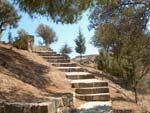 |
More Information Here...
|
|
| |
|
Gournia Archaeological Site
|
|
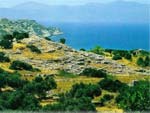 |
|
2 Km from Pachia Ammos village (19 Km from Ag.Nikolaos). The location owes its name to the numerous small antique basins, its ancient name is not known. The city of Gournia is the only Minoan city which has been so widely excavated and is well preserved, it has been also named "Pompey of Minoan Crete". The small palace which is situated in the center of the city is estimated to be built in 1600 b.c. The archaeological value of the site comes from the fact (in its streets, its houses, the market and the sanctuary) for the first time is presented so expressively the image of the everyday life of its inhabitants.
Telephones:(2810) 226092, (28410) 22462
Open:Tue-Sun 08:30-15:00
|
|
More Information Here...
|
|
| |
|
Tylissos Archaeological Site
|
|
| |
The houses of Tylissos were built during the LM I period (16th-15th century B.C.). Additions were made on House A in the LM II (15th-14th century B.C.) and on House C during the LM III period (14th century B.C.). The site was destroyed by fire in the 14th century B.C. and reinhabited in historic times as is attested by ruins of later houses over the Minoan ones.
Telephone:(2810) 831241
Open:daily 08:30-15:00
|
|
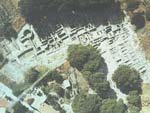 |
More Information Here...
|
|
| |
|
Church of Saint Titus
|
|
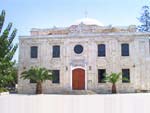 |
|
The church of Ag.Titus - Heraklio's patron saint - is located in the centre of Heraklio. It was built by the Byzantines and during the second Byzantine period it served as the city's cathedral. During the Venetian Rule, it housed the seat of the Latin archbishop and became a catholic cathedral. It was renovated in 1466, only to be ruined while in a fire, in 1544. During the Turkish Occupation it served as a mosque and was called "Vizier Tzami". The present-day structure is the result of renovations, in 1872 and 1922, after its entire destruction by a strong earthquake in 1856. The skull of St Titus was transferred here from Venice, in 1956, and has since been kept in the church.
Telephone:(2810) 246201
|
|
|
|
| Back to top |
|

